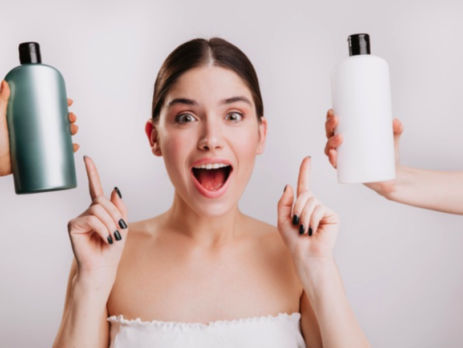UNDERSTANDING SULFATES – FINALLY!
Sulfates have become the most talked-about ingredients in hair products for good reason and learning about them can help you make better buying decisions when searching for your ideal shampoo. First and foremost, what exactly are sulfates? Simply put, sulfates are chemicals used as cleansing agents. There are good ones and really toxic ones. Many traditional products ranging from your floor cleaner to your hand soap contain toxic and harsh sulfates. Prolonged use of them has drying effects on your hair as they tend to over-cleanse and roughen up the protective cuticle layer. When your cuticle is not intact as it should be, your hair strands become more susceptible to color fading, frizz, and dull-looking hair. Sulfates in shampoos disrupt the cuticle layer of the hair by raising it exposing the color molecules within your hair and causing them to escape. This can alter your color or lead to color fading.
Now for choosing the right kind of shampoo for yourself… If you shampoo your hair infrequently, it can be more challenging to sufficiently cleanse your scalp due to the increase in product and sebum build-up. For those who shampoo daily, sulfate-free shampoos will do the trick, however, if you wash less frequently, you may need to alternate weekly with a shampoo containing sulfate. The two most commonly used and cheapest forms of sulfates are sodium lauryl sulfate and sodium Laureth sulfate. They are easy to spot out as they are usually the first few ingredients listed on the back of a shampoo bottle. Regardless of the cleansing capability of a shampoo. You really need to be your own judge and ensure that whenever you’re washing your hair, you’re removing all the build-up by focusing your product on the roots, and that your hair isn’t left feeling waxy or looking greasy as it dries.
While many products still contain sulfates, consumers are becoming more discerning and realizing they can do just fine without them. The continued exposure to harmful ingredients is beginning to show negative signs in our overall health and is tied to hormonal disruptions and increased toxicity levels in our bodies. The more recent research and development in the beauty and cosmetic industries are innovating the ingredients used in products while maintaining effectiveness and delivering results. For example, sodium cocoyl isethionate is a gentle and safe cleansing alternative based on fatty acids from coconut oil and isethionic acid, a type of sulfonic acid. You can find this or similar derivatives in many of today’s shampoos.
So the goal is to stay healthy, find the right shampoo frequency that maintains a clean scalp and seek the most gentle yet effective shampoo for your hair in order to sufficiently cleanse but not damage your ends over time.
There is a happy medium somewhere out there waiting to be discovered by you.
Stay clean,
Shab


Comment (1)
Thanks for sharing. I read many of your blog posts, cool, your blog is very good.